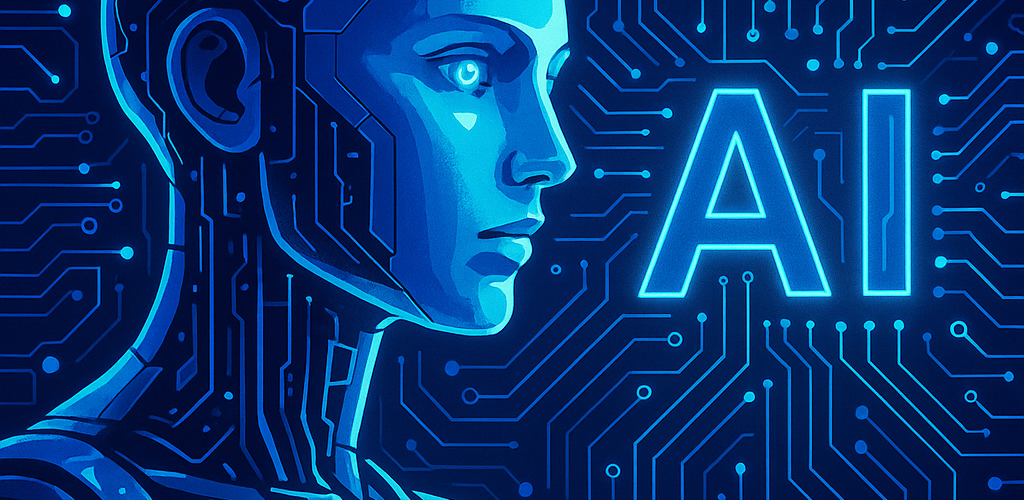Blog
Artificial Intelligence Explained: ChatGPT Alternatives, AI Tools, and Real-World Applications
- April 19, 2025
- Posted by: One Digital Wave

Artificial Intelligence (AI) is no longer just a futuristic concept. It’s already transforming the way we live, work, and create. Whether you’re a freelancer, developer, educator, or entrepreneur, understanding how AI works—and the tools available—can give you a serious edge.
In this post, we’ll explore what AI is, introduce powerful tools like ChatGPT and its alternatives, and look at how AI is changing industries across the board.
1. What Is Artificial Intelligence?
AI (Artificial Intelligence) refers to machines and software systems that can mimic human intelligence. This includes things like learning from data, understanding language, recognizing images, making decisions, and even generating creative content.
Why is AI important?
AI is already in your pocket—think voice assistants, Netflix recommendations, and spam filters. But it’s also used in high-stakes fields like medicine, finance, and education. It’s growing fast, and it’s shaping the future in real time.
2. What Is ChatGPT?
ChatGPT is a conversational AI developed by OpenAI. Built on the GPT (Generative Pre-trained Transformer) architecture, it can understand and generate natural language text, making it incredibly versatile for:
- Writing and editing content
- Answering questions
- Coding help
- Brainstorming ideas
- Language translation
- Summarizing documents
People use it for everything from writing resumes and blog posts to building apps and managing customer support.
3. ChatGPT Alternatives Worth Knowing
While ChatGPT is a popular option, there are other AI models making waves:
Claude (by Anthropic)
- Prioritizes safety and alignment
- Strong in nuanced conversation and reasoning
Gemini (by Google)
- Integrated with Google Workspace tools
- Multimodal (handles text, code, and images)
Mistral
- Open-weight, high-performance models
- Great for developers and researchers
Meta’s LLaMA
- Lightweight and scalable
- Frequently used in open research settings
Mixtral & OpenAssistant
- Open-source, community-driven AI tools
- Perfect for experimentation and custom setups
Each model has its own strengths. Some are better at reasoning, others at coding, and some shine in creative tasks.
4. Useful AI Tools Beyond Chatbots
AI isn’t just about conversation. Here’s how it’s being used in other areas:
🖌 AI for Design
- DALL·E: Turns text prompts into realistic images—great for branding and social content.
- Midjourney: Known for artistic, high-quality image generation.
🧠 AI for Productivity
- Notion AI: Helps write, summarize, and organize ideas inside your notes.
- Copy.ai & Jasper: Content marketing tools to write emails, blogs, and social posts at scale.
💻 AI for Coding
- GitHub Copilot: Your AI pair programmer, giving real-time code suggestions.
- Tabnine: Offers autocompletion with strong privacy options, great for teams.
5. Real-World Applications of AI
Here’s where AI is making a real impact:
- Healthcare: Early diagnosis, personalized treatment, and medical research.
- Education: Adaptive learning platforms that tailor content to each student.
- Finance: Fraud detection, credit scoring, and robo-advisors.
- Customer Service: 24/7 AI chatbots and automated helpdesks.
- Creative Industries: Music composition, video editing, and content generation.
AI is no longer just a backend tool—it’s driving the frontlines of innovation.
6. Ethical Considerations and Limitations
With great power comes great responsibility. Some critical concerns include:
- Bias: AI models can reflect social and historical biases in their training data.
- Privacy: Data usage and protection are still major concerns.
- Job Displacement: Some roles are at risk of being automated.
- Misinformation: Generative models can create content that’s inaccurate or misleading.
Responsible use of AI means being aware of its limitations and building systems that are fair, transparent, and accountable.
7. What’s Next? The Future of AI
AI is evolving rapidly—but that doesn’t mean you have to be a developer to keep up.
Here’s how to stay ahead:
- Try out the tools: Explore what works for your goals or industry.
- Keep learning: Follow tech blogs, attend webinars, and experiment.
- Think critically: AI isn’t always right. Verify outputs and stay curious.
In the end, AI is here to enhance your work—not replace it. The best thing you can do is learn how to work with it effectively.
